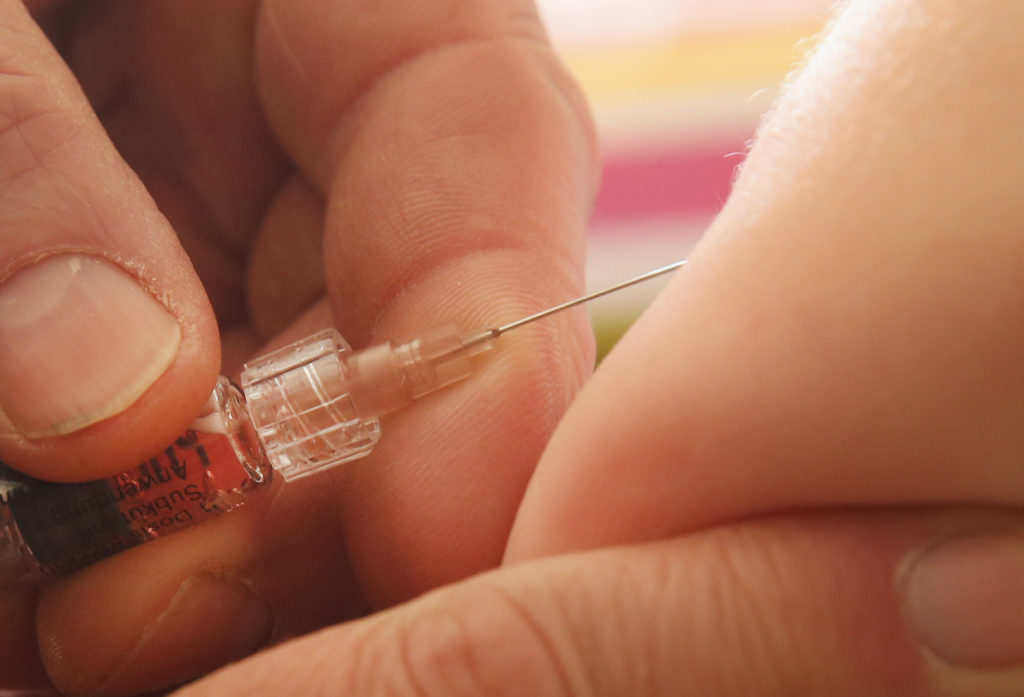Chlamydia sexually transmitted infection (STI), most common in North America and Europe, is caused by the bacterium Chlamydia trachomatis. This STI is becoming more common and the number of cases has been increasing for fifteen years. In Canada, more than 65,000 cases were reported in 2006. In 3/4 cases, IST in ¾ of cases was found among adolescents, and young adults aged 15 to 24 years. This infection is difficult to diagnose because the majority of infected people have no symptoms, and therefore, do not seek treatment. People infected with gonorrhea, the bacterium causing gonorrhea, are also often infected by chlamydia. This is why the screening of the two diseases is carried out systematically. Although the infection is easily treated, it can cause serious health problems if not detected and treated early.
Chlamydia infection causes
- Chlamydia is transmitted through oral sex, anal or unprotected vaginal sex, by sharing sex toys, through the exchange of body fluids and mucosal contact. However, it is rarely transmitted through oral sex.
- Chlamydia can also be passed to newborns infected by mothers during birth.

Chlamydia infection possible complications
In women, untreated chlamydia can spread from the vagina to the uterus and sometimes the fallopian tubes. It then causes an inflammatory pelvic infectious disease. It can then cause infertility, increase the risk of ectopic pregnancies, and be responsible for chronic pelvic pain. In men, chlamydia little cause inflammation of the prostate (prostatitis infectious) or testicles (epididymoorchitis), which can cause infertility.
In rare cases, the infection spreads through the bloodstream to joints, producing inflammation and this, in both sexes. This is Fiessinger-Leroy-Reiter’s syndrome. Chlamydia infection increases the risk of HIV transmission. When a newborn infected during childbirth, it may contract later a lung infection (pneumonia) or eye (conjunctivitis).
Chlamydia Infection: When to check?
If unprotected sex occurred, consulting a doctor for screening tests is the right step. Chlamydia is often called a “silent disease” because over 50% of men and 70% of infected women have no symptoms and do not know they have it. Symptoms usually appear within a few weeks, but they can take even more time before revealing.

Chlamydia Infection symptoms
Chlamydia is often called the “silent disease” because over 50% of men and 70% of infected women have no symptoms and do not know they have the disease. Symptoms usually appear within a few weeks, but they can take even more time before revealing.
In Women
In most cases, no sign appears; in others:
- Burning sensation when urinating
- Unusual vaginal discharge
- Bleeding between periods, or during or after sex
- Pain during intercourse
- Lower abdominal pain in the lower back
- Proctitis (inflammation of the lining of the rectum)
- Abnormal flow through the anus
In Men:
- Sometimes no signs
- Tingling, itching of the urethra (channel to the bladder outlet which opens to the tip of the penis)
- Abnormal flow through the urethra rather clear and slightly milky;
- Burning on urination
- Pain and sometimes swelling in the testicles, in some cases
- Proctitis (inflammation of the lining of the rectum)
- Abnormal flow through the anus
In the newborn child that has chlamidiae:
- Eye infection with redness and flows at that level
- A lung infection that causes coughing, difficulty breathing, and fever.

Chlamydia Infection: risk factors
- Having more than one sexual partner
- Having a partner who has other sexual partners
- Not using a condom
- Having an STI in the past
- Between 15 and 29 years.
- Being HIV positive
Chlamydia infection prevention
Basic preventive measures
The use of condoms helps prevent transmission of chlamydia during anal or vaginal sex. Dental dams or condoms can also serve as means of protection during oral sex.
Screening Measures
Screening is necessary when we had unsafe sex or a new partner. It allows everyone to go to a free and anonymous screening center (even if these people come for HIV testing), planning centers, Orthogenic centers. In these places, 10% of people tested are positive for chlamidiae. Some doctors recommend screening for all pregnant women under 25 years.
Regular screening examination allows prompt treatment and prevents the transmission of infection to new partners. In the case of a positive result, it is important to notify any person with whom you have had sexual relations and that may expose. She will have to undergo an HIV test and be treated immediately if infected. This is extremely important because this infection is not immunizing, you can catch it repeatedly. But in 84% of cases, a person who undergoes further contamination was the same person as the first time!
Medical treatments and complementary approaches
Medical treatment
Chlamydia is treated with antibiotics. Current recommendations include:
- Azithromycin orally in a single 1 gram dose prescribed priority.
- Doxycycline 100 mg orally morning and evening, for a week. It has more side effects and failure is forgotten.
The partners must also be treated. Sexual intercourse avoided or involve condoms for at least a week. The search for other STIs is also essential and the treated person should see his doctor later than 7 days after the start of treatment. In 10-15% of cases, infection even well cared for persists. Therefore, two screening tests carried out again, about 5 weeks after the end of treatment and between 3 and 6 months after the end of treatment.
Complementary approaches
Although the compounds of goldenseal appear to theoretically effective against chlamydia, the availability, and effectiveness of antibiotics that make inappropriate choices.

Chlamydia – The opinion of our doctor
As part of its quality approach, vivigeek.com advised you to seek the opinion of a health professional. Chlamydia is the most common STI in Canada. It often produces no symptoms and is therefore still too often “underdiagnosed”. These long-term consequences, particularly on fertility, however dramatic. Remember that simple tests, noninvasive, from urine are easily accessible and enable rapid diagnosis. And remember that you will be infected again if your partner has not been treated.


